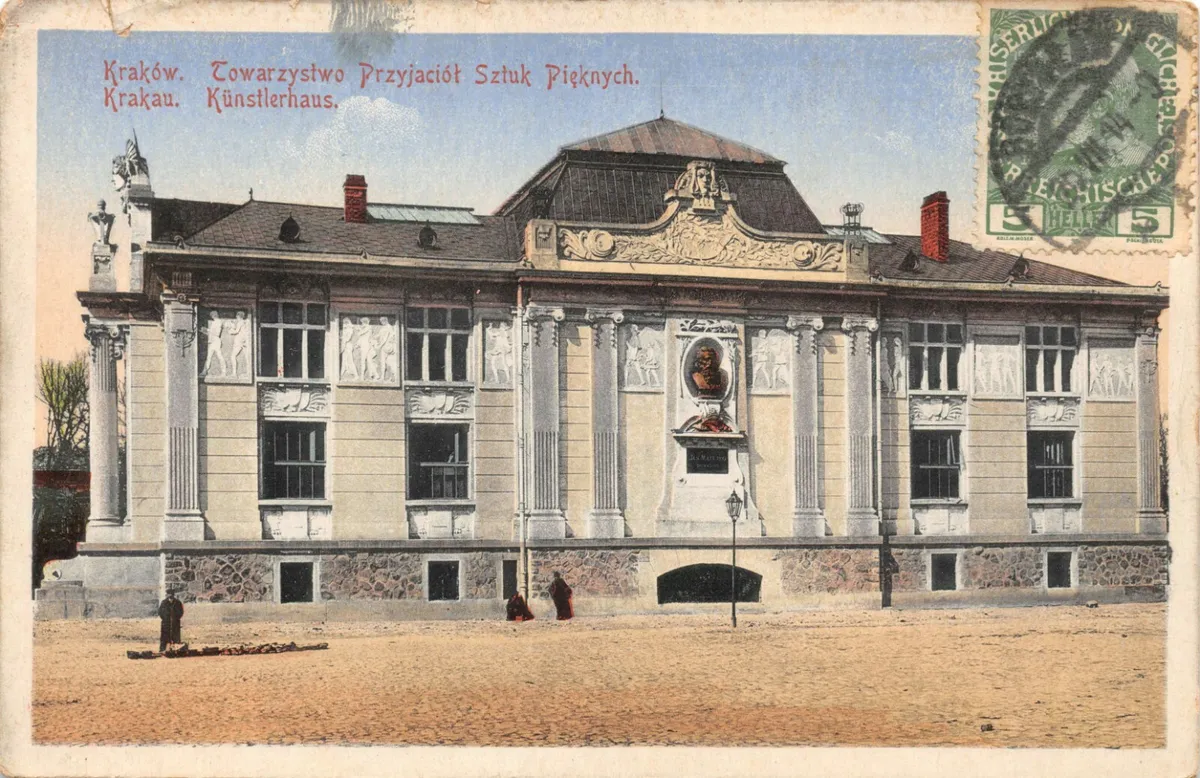Witold Pruszkowski - Gifted Gallery
- Lilium

- Dec 13, 2023
- 3 min read

Witold Pruszkowski, born 14 January 1846, was a Polish painter and graphic artist in the Symbolist style.
Pruszkowski was born in Bershad but spent his childhood in Odessa and Kiev. His family emigrated to Dieppe in 1860, and he relocated to Paris in 1866, where he had his first drawing lessons with the portrait painter, Tadeusz Gorecki, the son-in-law of poet Adam Mickiewicz.
From 1869 to 1872, Pruszkowski studied at the Academy of Fine Arts, Munich with Alexander von Wagner. In 1872 he went to Kraków to continue his studies under Jan Matejko, who was the director of the local School of Fine Arts at the time. Despite the respect he had for Matejko, he did not yield to his artistic influence. This is evidenced by a painting created under the master’s supervision, the only historical painting in the artist’s oeuvre, depicting the Offering of the Crown to Piast. It was during this period that he first came into contact with Polish Romantic literature, which had a significant impact on his later work, and assimilated certain features of Arnold Böcklin’s atmospheric symbolic painting.
From 1872 Pruszkowski regularly participated in exhibitions of the Society of the Friends of Fine Arts in Kraków. He also frequently exhibited in the Lviv Society of the Friends of Fine Arts (since 1875) and the Warsaw Society for the Encouragement of Fine Arts (since 1876), and since 1880 in Aleksander Krywult’s Salon. He took part in many international exhibitions, among others in Paris (1881), Munich (1879), Berlin (1891, 1895, 1896 – a gold medal for the pastel March to Siberia), Chicago and San Francisco (1893 – a silver medal for the pastel Courtship).
After graduation in 1876, Pruszkowski lived in Kraków for several years. During this period, he established close contacts with Jacek Malczewski, which in time turned into a cordial friendship. He was one of the initiators and co-organisers of the Literary-Artistic Circle founded in 1881. A year later, he settled with his family in Mników near Kraków.
Over the next few years, Pruszkowski and his brother travelled to Algeria, Tunisia and Italy. He also held several exhibitions in Warsaw and Lwów. Later, he exhibited internationally, including shows in San Francisco and Chicago. In 1892, he became a member of the construction committee for a monument to Artur Grottger.
"Pruszkowski was a versatile artist in the choice of themes and stylistic conventions. He used oil and pastel techniques with equal mastery. He was a loner, working in seclusion and concentration and never showing his unfinished works. His paintings were very much influenced by his personal experiences, emotions and moods."
During his stay in France, Pruszkowski became acquainted with the latest achievements of European art, which largely influenced the formation of his complex creative personality, in which painterly sensitivity to light and colour was combined with a love of fantasy, while his tendency towards Romantic mysticism and increased expression in patriotic-martyrologic scenes went hand in hand with the ability to observe the world realistically. The artist’s mature work, developed between 1875 and 1894, created a kind of bridge between the legacy of great Romantic poetry and the symbolic art of Young Poland.
In 1876 Pruszkowski left for Mogiła, having been commissioned to create a polychrome for the chapel of Mother Mary in the Cistercian monastery there. Following his first longer stay in the countryside, his paintings were influenced by genre motifs from the life of the local people, as well as paintings inspired by folk tales and beliefs. The first of these thematic trends opens with a composition entitled When Morning Dawn is Breaking (1876).


Pruszkowski was ill for several years before his death. While visiting with family in Kołomyja, he suddenly disappeared. He was found at the train station in Budapest, suffering from extreme exhaustion, and was taken to a hospital, where he died two days later on the 10th October 1896, aged 50.
Although he painted portraits and rural scenes, he is best remembered for his depictions of fairy tales and folklore; working in pastels as well as oils. He also drew inspiration from the works of Juliusz Słowacki and Zygmunt Krasiński. His most familiar work is, perhaps, "March to Siberia", painted in 1893. Its whereabouts were unknown for many years, but it was found in a private collection after World War II and is now in the Lviv National Art Gallery.






































































































Comments